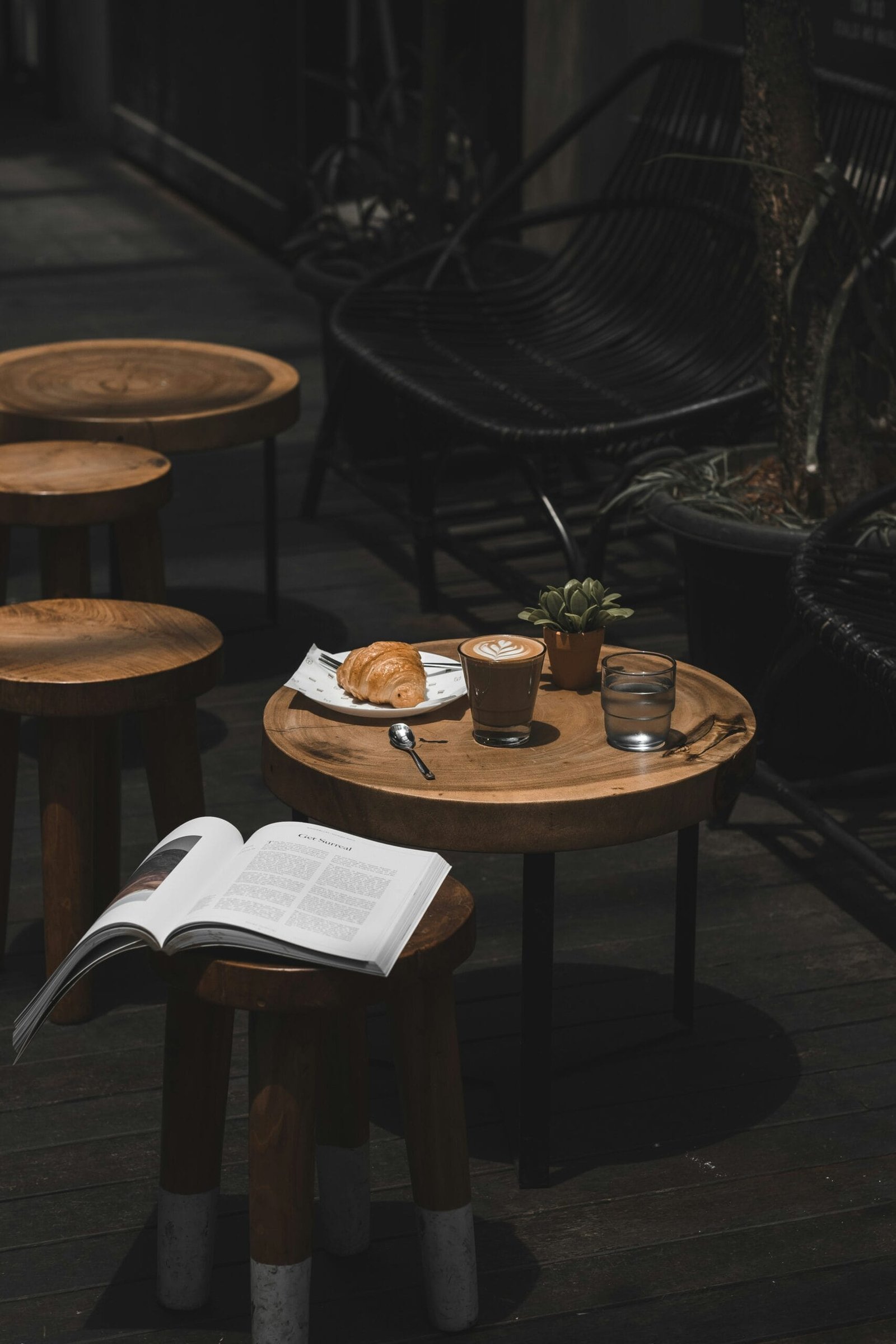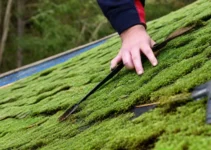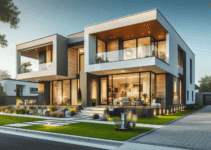Explore the growing trend of tiny house living, emphasizing simplicity, sustainability, and financial independence. Learn how to design and build a tiny house, maximize space efficiency, and adapt to a minimalist lifestyle. Discover the financial benefits and challenges, along with real-life success stories that highlight the transformative impact of tiny house living on personal and professional fulfillment.

Introduction to Tiny House Living
In recent years, tiny house living has seen a significant rise in popularity, capturing the imagination of individuals seeking simplicity, sustainability, and financial independence. The concept of tiny house living revolves around inhabiting a small-scale residence, typically under 400 square feet. This movement has its roots in the broader minimalist movement, which advocates reducing life’s physical and material excess. Originating in the United States, the tiny house movement quickly gained traction worldwide as people from various walks of life began to appreciate the manifold benefits it offers.
A primary appeal of tiny house living is the opportunity to simplify one’s lifestyle. Dwelling in a smaller space necessitates meticulous consideration of possessions, thus encouraging a clutter-free environment. By minimizing belongings to the essentials, individuals often find a renewed sense of clarity and freedom. This pared-down way of living allows for a concentrated focus on experiences over material goods, fostering a richer quality of life.
Please, read our post and do not forget to check our YouTube channel “Grig Stamate”:
https://www.youtube.com/@GrigStamate
You will find there, thousands of designing, furnishing, and decorating ideas for your home interior and outdoors.
Allow me to mention one of them:
Live comfy in a Tiny House [Practical and Functional Interior] (video)
Another compelling aspect of tiny house living is the reduced environmental footprint. Smaller homes require fewer resources to build and maintain, leading to a lower consumption of energy and materials. Additionally, many tiny houses are designed with sustainability in mind, featuring eco-friendly building practices, energy-efficient appliances, and renewable energy sources like solar panels. This aligns with a growing awareness and commitment to mitigating environmental impact, aligning with global sustainability goals.
Financial freedom is another significant advantage attracting many to the tiny house lifestyle. Conventional homeownership often necessitates substantial long-term financial commitments, including mortgages, utility bills, and ongoing maintenance costs. In contrast, tiny houses, due to their size and efficient design, are more economical to build and maintain, allowing individuals to achieve homeownership without incurring substantial debt. Consequently, many tiny house dwellers experience enhanced financial security and flexibility, enabling them to allocate more resources to savings, travel, or other pursuits.
Ultimately, tiny house living offers a unique intersection of simplicity, sustainability, and affordability. As more people recognize the inherent value in downsizing, the tiny house movement continues to resonate, challenging traditional notions of what constitutes a home and redefining the possibilities for modern living.
Designing Your Tiny House
Designing a tiny house requires meticulous planning to maximize every square inch of available space. Unlike traditional homes, tiny houses necessitate innovative design strategies that prioritize both aesthetics and functionality. One of the primary considerations when designing a tiny house is space utilization. This involves creating a layout that makes efficient use of limited space, often through the integration of multipurpose furniture and clever storage solutions.
Multipurpose furniture plays a crucial role in tiny house design. Pieces such as fold-out beds, tables that double as desks, and couches with built-in storage are essential for saving space while ensuring comfort. These versatile items help in reducing clutter and making the home feel more spacious. Similarly, clever storage solutions like hidden compartments, under-stair storage, and built-in shelving can greatly enhance the livability of a tiny house by keeping belongings organized and accessible.
Balancing aesthetics and functionality is key in tiny house design. While it is important to create a visually pleasing environment, it should not come at the expense of practicality. Choosing a minimalist design scheme with neutral colors and clean lines can make the space feel larger and more open. Large windows not only bring in natural light but also provide excellent views, which can make the interior feel more expansive and connected to the outdoors.
Collaboration with architects or utilizing DIY plans can provide valuable insights and expertise. Working with an experienced architect can ensure that your tiny house meets all structural and legal requirements while incorporating your personal style and preferences. Alternatively, for those inclined towards a hands-on approach, numerous DIY plans are available online that offer step-by-step guidance on designing and building a tiny house. These plans can be customized to suit specific needs and budgets, providing a cost-effective solution for aspiring tiny house dwellers.
In summary, designing a tiny house is a blend of creativity and practicality, requiring thoughtful consideration of how to best use limited space. With careful planning and the right approach, the result can be a comfortable and beautiful living space that complements the tiny house lifestyle.
Building and Materials
Building a tiny house involves a careful selection of materials and methods to ensure both sustainability and cost-effectiveness. When considering materials, sustainable options like reclaimed wood, bamboo, and recycled metal are highly recommended. These materials not only minimize environmental impact but also contribute to the durability and aesthetic appeal of the tiny house. For instance, reclaimed wood adds a rustic charm, while bamboo is known for its strength and rapid renewability.
A crucial decision in building a tiny house is whether to opt for a prefabricated (prefab) model or to construct from scratch. Prefab tiny houses are manufactured in factories and then assembled on-site, offering the advantage of quicker construction times and often, lower costs. Prefab options generally ensure a high level of quality control due to the standardized production environment. However, customization might be limited compared to a custom-built tiny house.
Building from scratch, on the other hand, allows for a high degree of personalization. Homeowners can choose specific materials and design elements that match their preferences and lifestyle needs. This approach, while potentially more expensive and time-consuming, provides the flexibility to incorporate unique features, making the tiny house truly one-of-a-kind. However, building from scratch requires a significant investment of time, labor, and potentially higher costs if specialized skills or uncommon materials are chosen.
Cost-effective options are also a major consideration. For those on a tighter budget, using readily available materials such as plywood, and focusing on a simple, efficient design can significantly reduce overall costs. Modular construction, where components are built separately and then assembled, can also save money and time.
Both prefab and custom-built tiny houses have their benefits and drawbacks. Prefab houses are ideal for those seeking a more affordable, quicker option with less scope for personalization. Conversely, building from scratch is perfect for those looking to create a highly customized space that reflects their individual tastes and needs, albeit with more investment in time and resources.
Maximizing Space Efficiency
Living in a tiny house necessitates innovative strategies to maximize space efficiency without compromising on comfort. The cornerstone of such efficiency lies in smart storage solutions, which can transform a compact area into a well-organized and functional living space. Incorporating built-in cabinetry, wall-mounted shelves, and under-floor storage are some effective ways to utilize every inch of available space. Custom-built furniture that fits the dimensions of the house is another excellent option to ensure no space goes to waste.
Folding furniture is a hallmark feature in tiny homes, offering remarkable flexibility and utility. Items like foldable tables and chairs or Murphy beds can be stowed away when not in use, transitioning spaces from one function to another effortlessly. For example, a kitchen island that doubles as a dining table or work desk can be folded down against the wall, freeing up valuable floor space. Lifting beds with storage underneath are also popular, providing a hidden space to keep belongings out of sight but within easy reach.
Creative layout designs play a crucial role in optimizing the limited space. An open floor plan can make the area feel larger and more inviting, eliminating unnecessary walls that partition off space. Multipurpose rooms and furniture also contribute significantly to space efficiency. A living room that transforms into a guest bedroom or a staircase with hidden storage compartments under each step are practical solutions showcasing the thoughtful design that maximizes every square foot.
Real-world examples highlight the success of these strategies. Residents often use pegboards and magnetic racks in the kitchen for utensils and spices, ensuring surfaces are kept clear. Vertical gardening and compact appliances further optimize the space. Maintaining an organized and clutter-free environment is essential, so it’s important to adopt habits and systems that prevent the accumulation of unnecessary items.
Ultimately, through smart storage solutions, folding furniture, and creative layouts, tiny house dwellers can achieve a highly efficient and comfortable living experience. These strategies not only make the most of the available space but also enhance the functionality and aesthetic of tiny homes, proving that less can indeed be more.
Utilities and Off-Grid Living
Living in a tiny house necessitates a thoughtful approach to utilities, given its compact nature and often remote locations. One of the primary considerations is water supply. Tiny house dwellers have several options, including connecting to a local municipal water system, utilizing rainwater collection systems, or accessing a nearby natural water source. Rainwater harvesting is particularly popular among those choosing an off-grid lifestyle, providing an eco-friendly solution that aligns with sustainable living principles. Treatment systems, such as filters and purifiers, are essential to ensure the water collected is safe for consumption.
Electricity is another vital utility that tiny house owners must manage. Solar panels are among the most common solutions, providing renewable energy that can power essential appliances and lighting. Advances in solar technology have made it increasingly accessible and cost-effective, allowing tiny house residents to achieve a high degree of energy independence. For those who prefer a less off-grid approach, tiny houses can be connected to the local power grid, providing a seamless and reliable source of electricity without the need for extensive infrastructure.
Waste management is equally crucial, particularly for those living in remote areas. Composting toilets present an excellent option, offering an efficient and environmentally friendly way to process human waste. They don’t require water, reducing overall consumption and eliminating the need for complex sewage connections. Greywater systems, which recycle water from sinks and showers, can be used for irrigation or flushing purposes, further minimizing environmental impact.
Choosing between off-grid living and connecting to local utilities often depends on individual preferences, location, and budget. Off-grid solutions generally require a higher initial investment but offer long-term savings and sustainability. Conversely, connecting to municipal utilities may be more convenient and less expensive upfront. Regardless of the choice, embracing eco-friendly solutions such as solar panels and composting toilets supports a more sustainable and self-sufficient lifestyle, perfectly complementing the ethos of tiny house living.
Lifestyle Adjustments
Living in a tiny house necessitates significant lifestyle adjustments, encompassing both psychological and social facets. One of the foremost changes is the need to adapt to a significantly smaller living space. For many, this downsizing process can be both liberating and challenging. The psychological shift involves letting go of unnecessary belongings and embracing minimalism. The benefits of this transition often include a sense of freedom from the clutter and material possessions that once filled larger homes, leading to a more organized and less stressful life.
The social aspects of downsizing involve navigating relationships in much closer quarters. In a tiny house, every action and movement is more perceptible, requiring enhanced communication and cooperation among occupants. Conflicts may arise more frequently due to the lack of personal space, making it crucial to establish boundaries and routines that respect each individual’s need for privacy. Open and honest communication is key to maintaining harmonious relationships in such intimate settings.
One major advantage of tiny house living is the fostering of simpler and more focused lifestyles. The reduced space encourages mindful consumption and prioritization of experiences over possessions. It can deepen the appreciation for the essentials and eliminate the distractions typically associated with larger homes. For many, this lifestyle shift leads to greater contentment and a closer connection to nature and community.
Adapting to a tiny house lifestyle also involves practical tips for making the most of limited space. Utilizing multi-functional furniture, embracing vertical storage solutions, and keeping spaces tidy are vital strategies. Creativity in organizing and maximizing every inch of the home can transform it into a functional and comfortable living area. Furthermore, engaging in outdoor activities and utilizing external storage options can help alleviate the constraints of a compact interior.
The shift to tiny house living entails embracing a deliberate and thoughtful approach to life. By focusing on the essentials, minimizing unnecessary possessions, and fostering strong relationships, individuals can find joy and fulfillment in their tiny homes. Adapting to this lifestyle requires effort and adjustment, but it offers a unique opportunity to cultivate a meaningful and simplified way of living.
Financial Benefits and Challenges
Living in a tiny house levies a significant impact on your financial landscape. Compared to traditional homes, tiny houses often offer considerable cost savings in several areas. One of the primary advantages is the reduction in housing costs. With the average cost of a traditional home significantly higher, tiny houses, which are typically smaller in scale and complexity, can be constructed for a fraction of the price. In addition to lower construction costs, the typical mortgage, if any, is markedly less burdensome.
Utilities and maintenance costs also tend to be significantly lower. A smaller living space means reduced energy consumption, translating into lower utility bills. This energy efficiency often extends to water usage, heating, and cooling systems, which are minimized due to the compact nature of tiny houses. Maintenance responsibilities are simplified and less expensive, as the smaller space entails fewer areas that require upkeep and potential repair.
However, tiny house living is not without its financial challenges. The upfront investment, while lower than a conventional home, still represents a significant outlay that includes land acquisition, construction materials, and labor. Financing options for tiny houses can be limited, as they may not qualify for traditional mortgages. Potential homeowners may need to explore personal loans, RV loans, or even crowdfunding to finance their tiny home dreams.
Moreover, prospective tiny house owners must navigate regulatory hurdles. Zoning laws and building codes can vary significantly by region, making it essential to conduct thorough research beforehand. Some localities may have stringent regulations that hinder or even prohibit the establishment of tiny houses. Compliance with these regulations can sometimes incur additional costs, which could offset some of the financial benefits.
Overall, while the financial benefits of tiny house living are compelling, they come with challenges that must be carefully considered and navigated. Proper planning and awareness of potential obstacles are crucial to making an informed decision. By evaluating both the advantages and the hurdles, potential tiny house owners can make a strategic move towards a more financially sustainable lifestyle.
Success Stories and Testimonials
Living in a tiny house has been a transformative experience for many individuals and families. Take, for instance, Sarah and John, a couple who made the switch from a traditional three-bedroom home to a 200-square-foot tiny house. For them, the decision wasn’t just about downsizing; it was about embracing a sustainable and meaningful lifestyle. Sarah mentions, “We’ve developed a stronger bond as a family because we are closer together. The reduced expenses have also allowed us to travel more, enriching our lives with diverse experiences.”
Another inspiring story comes from Lisa, a single mother who moved into a tiny house so she could save money for her children’s education. “Initially, I was worried about the limited space, but it turned out to be an advantage,” she explains. “The tiny house taught us to prioritize what truly matters. My kids are happier, and I’ve managed to save a substantial amount for their future.”
For Jacob, living in a tiny house was a career choice that paid off. A freelance graphic designer, he found that minimizing his living expenses allowed him to invest more in his business. “I used to spend a significant part of my income on rent. Now, I channel those savings into upgrading my equipment and skills. It’s been a game-changer for my professional growth,” Jacob remarks. His tiny house also doubles as a creative studio, proving that limited space does not limit possibilities.
These testimonials highlight how diverse the advantages of tiny house living can be. Whether seeking financial freedom, stronger family ties, career growth, or a more sustainable lifestyle, tiny houses offer a unique pathway toward achieving these goals. As these stories illustrate, the transition to a tiny house can lead to profound personal and professional fulfillment, making it an appealing option for those seeking change.
Other related posts from our website:
https://howtobuildahouseblog.com/live-comfy-in-a-tiny-house-practical-and-functional-interior/
https://howtobuildahouseblog.com/four-wheel-home-laird-herberts-tiny-house/
https://howtobuildahouseblog.com/cute-small-apartments-tiny-interiors-under-400-sq-ft-37-sq-m-4/
Thank you so much for your attention.
Stay tuned. We will upload many other amazing posts to our website and videos onto our YouTube channel.
Thank you so much.
for your time and attention.
Best Regards
See you to another post,
Bye, Bye


